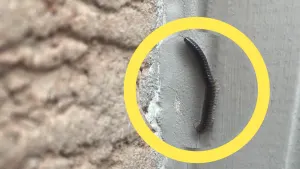
Robot fleet dives to investigate marine snow, deep sea creatures discovered
Researchers with the Australian Antarctic Program Parternship have deployed deep-diving robots to the Southern Ocean to study climate change and have encountered some fascinating creatures in their trawls.
Even though the depths of the deep sea are thousands of kilometres away from the atmosphere, the movements and functions of this underwater realm drastically influence the climate. Oceans cover more than 70 per cent of Earth’s surface and capture roughly 25 per cent of all carbon emissions, which is why protecting marine ecosystems is a critical action that will lower the risks from warming atmospheric temperatures.
To learn more about how marine life removes carbon from the atmosphere and what role this has in climate change, researchers from the Australian Antarctic Program Partnership (AAAP) have deployed a fleet of “new-generation, deep-diving ocean robots" to parts of the Southern Ocean near Australia.
The researchers are sailing on CSIRO’s RV Investigator and are using satellites, automated ocean gliders, and deep-diving robots to collect information on specific carbon-rich particles. Billions and billions of marine organisms, such as phytoplankton, live at and near the ocean’s surface and capture carbon from the atmosphere through photosynthesis. Carbon is needed by these organisms to sustain life and remains in their bodies even after their death. When these organisms die they slowly sink to the depths of the sea, which the researchers from AAAP compare to “a scene from a snow globe.”
The carbon-rich carcasses that slowly drift to the bottom of the ocean are referred to as marine snow. They eventually become sequestered in the ocean floor’s sediment, where they can remain for millions of years. Even though phytoplankton are too small to be seen with the naked eye, scientists estimate that there are a staggering 45 billion tonnes of new phytoplankton each year, which is partly why they are able to capture such enormous amounts of carbon.
“The microscopic algae in the ocean are responsible for removing carbon dioxide from the atmosphere as much as the forests on land are,” said Voyage Chief Scientist, Professor Philip Boyd, from AAPP and the University of Tasmania’s Institute for Marine and Antarctic Studies.
“We are excited about how this combination of new imaging sensors will allow us to get a larger and much clearer picture of how ocean life helps to store carbon. It’s a bit like an astronomer who has only been able to study one star at a time suddenly being able to observe the galaxy in three-dimensions.”
Researchers say that studying marine snow provides an opportunity to learn more about how the ocean has impacted the Earth’s climate for millions of years, the dynamics of Antarctic ice shelves, and interactions between the ocean and the atmosphere. The scientists also say that this knowledge will help improve models and projects of future climate change and sea level rise.
UNEXPECTED FINDINGS
The deep sea is crawling with unidentified marine animals and scientists estimate that there could be anywhere from several hundred thousand to more than ten million species in the ocean that are unknown to science. While aboard the RV Investigator, researchers have documented dozens of animals that they observed or accidentally caught in their trawls.
See below for a look at some of the deep sea creatures the researchers have discovered during their exploration in the Southern Ocean.
Thumbnail credit: Svenja Halfter












